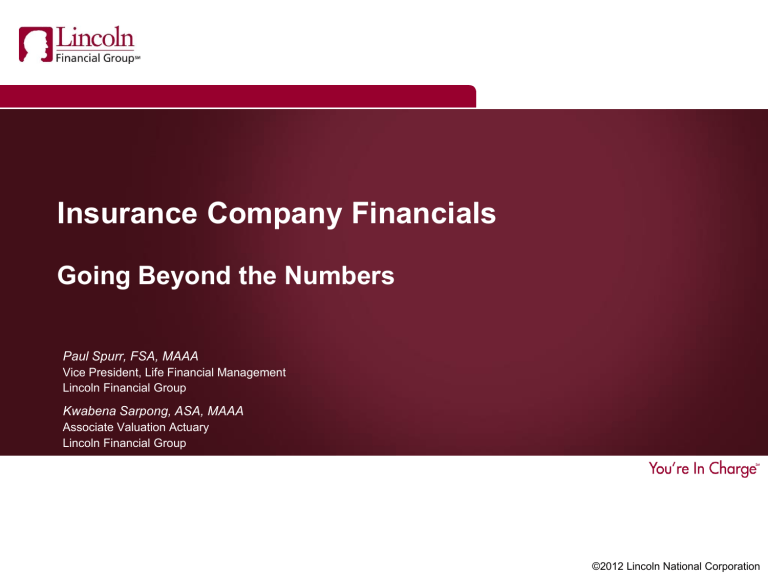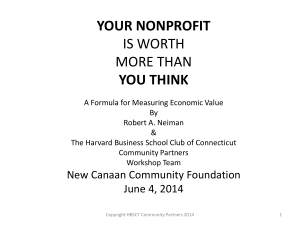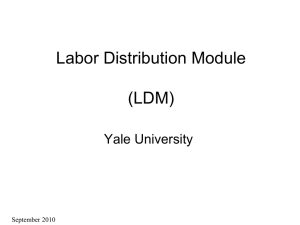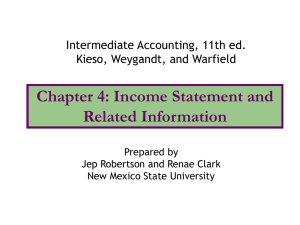How does a Life Insurance Company Make Money?

Insurance Company Financials
Going Beyond the Numbers
Paul Spurr, FSA, MAAA
Vice President, Life Financial Management
Lincoln Financial Group
Kwabena Sarpong, ASA, MAAA
Associate Valuation Actuary
Lincoln Financial Group
©2012 Lincoln National Corporation
Agenda
• Introductions
• Overview
• Let’s go to the last chapter
• Preparation
– Toolkit
– Analysis
– Presentation
2
Overview
This presentation will focus in how to translate the complexity of company financials into meaningful, digestible pieces. Who is your audience? What are the most important points to convey?
How do you most effectively tell your story?
3
The Last Chapter
• What is the story that we are going to tell?
• Lincoln Financial Group’s first quarter 2012 Press Release
– Life Insurance
Life Insurance income from operations was $142 million compared to $142 million in the first quarter of 2011 which included $2 million of net positive notable items.
– Life insurance sales of $122 million decreased 24% over the prior-year quarter reflecting a decline in secondary guarantee universal life sales in response to pricing actions. The company's strategy to direct sales to higher return products, including indexed universal life, variable universal life and term insurance, was successful as the aggregate sales of these products increased 11% over the prioryear quarter.
– Life insurance in force of $580 billion grew 2% and account values of $36 billion increased 5% over the prior-year quart er.
4
The Last Chapter
• Lincoln Financial Group’s first quarter 2012 CEO comments
– In addition . . . we are successfully executing the strategy to direct life sales to higher return products. I’ll speak more about this in a minute . . . but this pivot strategy is something we have shared with you in the past.
– Life insurance sales for the quarter were $122 million, down from a year ago.
This decline was expected . . . primarily as a result of pricing actions taken on our secondary guarantee universal life products in response to continued low interest rates. Since implementing our changes . . . many companies have followed our lead in making similar pricing adjustments . . . though not all of our competitors have taken action yet.
– Having said this . . . our pivot strategy to move to higher return product sales is taking hold. Sales of our indexed universal, variable universal and term life products were collectively up 11 percent.
5
The Last Chapter
• Lincoln Financial Group’s first quarter 2012 CFO comments
– Turning to our Life Insurance segment, earnings of $142 million were flat with the prior year quarter. Earnings growth in the life segment is muted by the removal of capital related to reserve financing transactions that we did last year.
This negatively impacted the current quarters earnings growth by 6% relative to the first quarter of 2011. Of course we’ve used the capital freed up by those transactions to support the share repurchases that we have done over the last year. When viewed in total the impact has been a positive for EPS.
– Reported revenue growth of 7.5% was elevated by the work we did in 2011 migrating to a single valuation system. I’d put normalized revenue growth in the range of 5% consistent with account balances that grew in excess of 5%.
– Interest spreads increased in the quarter relative to the fourth quarter of last year due to interest crediting rate actions taken during the quarter.
– Looking forward I’d expect to see 10 to 15 basis points of spread compression per year in today’s rate environment. This is consistent with our prior guidance on the impact of low interest rates.
6
The Last Chapter: Boiled down!
• Press Release
– Earnings Story
– Sales Story
– Growth Story
• CEO
– Added color to the sales story
• CFO
– Added color to the earnings story (growth)
– Discussed top line (revenue) growth
– Unusual earnings items
7
The Last Chapter: What do my bosses need from me?
• Takeaways
– Sales
– Growth metrics
– Topline (Revenue) growth
– Earnings
– Unusual items
• Avoid the technical aspects of earnings if possible
– All things actuarial/accounting
– These are important items to know and understand but making the story approachable for everyone is the key
• My scoreboard: Traditional Life Earnings
– 1q11: $22m
– 4q11: $23m
– 1q12: $20m earnings growth muted due to high claims
8
Toolkit
• How does a life insurance company make money?
• Analysis by major line of business
• Know the business strategy
• Know your products
• Growth characteristics
• Sales Plan
• Budget
• Earnings Plan
9
How does a Life Insurance Company Make Money?
Deposit
• Individual Annuity & Employer Based 401k (saving for retirement)
– Variable fees
– Fixed interest spread
• Individual Life (protects against unexpected death with a savings account)
– Non-Secondary Guarantee
• Universal Life (UL) (interest spread, mortality margin, expense margin)
• Variable Universal Life (VUL) (fees, mortality margin, expense margin)
10
How does a Life Insurance Company Make Money?
Premium
• Individual Life
– Term (protects against unexpected death)
• Employer Based Group Protection
– Life (protects against unexpected death
– Disability Income (protects against loss of earnings from sickness or injury)
• Short term
• Long term
– Dental (pays for some dental work)
– Worksite Products
• Premiums and investment income cover benefits and expenses
11
How does a Life Insurance Company Make Money?
Hybrid
• Secondary Guarantee (protects against unexpected death with the possibility of a savings account)
– UL (interest spread, mortality margin, expense margin)
– VUL (fees, mortality margin, expense margin)
12
Separate Analysis by Major Lines of Business
• Individual Annuities
– Fixed Annuities
– Variable annuities
• Group Protection
• Individual Life
– Interest Sensitive
– Traditional
13
Know the Business Strategy
• Products
• Markets
• Distribution
• Operations
• Risk Tolerance
• And so on…
• Be in the mix with the right people to learn
14
Know Your Products
• What products are being sold?
• What products are in-force?
• Accounting characteristics
15
Growth Characteristics
• Based on metrics that are unique to a product
• Life
– Face Amounts in-force
– Account Value in-force
• Include SOP 03-1 reserves
• With and without separate accounts
– Invested Assets
• Group Protection
– Earned Premium
• Annuities
– Account Value
• Fixed
• Separate Account
• In-force rolls off at x% and New Business is added at y%
– Growth of y% less x% roughly
16
Sales Plan (Your Line of Business)
• How much by product?
• What is the expected product mix?
• How has the product mix changed in the past year?
17
Budget
• How much is your business scheduled to spend?
• Accounting offsets
18
Earnings Plan
• How much do we plan to earn this year?
• Should be able to white board a three year plan based on factors discussed above
19
Analysis
• Remember the questions that need to be answered
– Takeaways from “The Last Chapter”
• Sales
• Growth metrics
• Topline (Revenue) growth
• Earnings
• Unusual items
• Set up the analysis to answer these questions
– Remember to make the analysis approachable
• As you analyze… keep “your toolkit” in mind
20
Sales Analysis
21
Key Growth Drivers
22
Revenue Analysis
23
Traditional Products Income Analysis
24
Interest Margins
25
Normalized Spread
26
Mortality Margin
27
Income Summary
28
Income Explained
29











